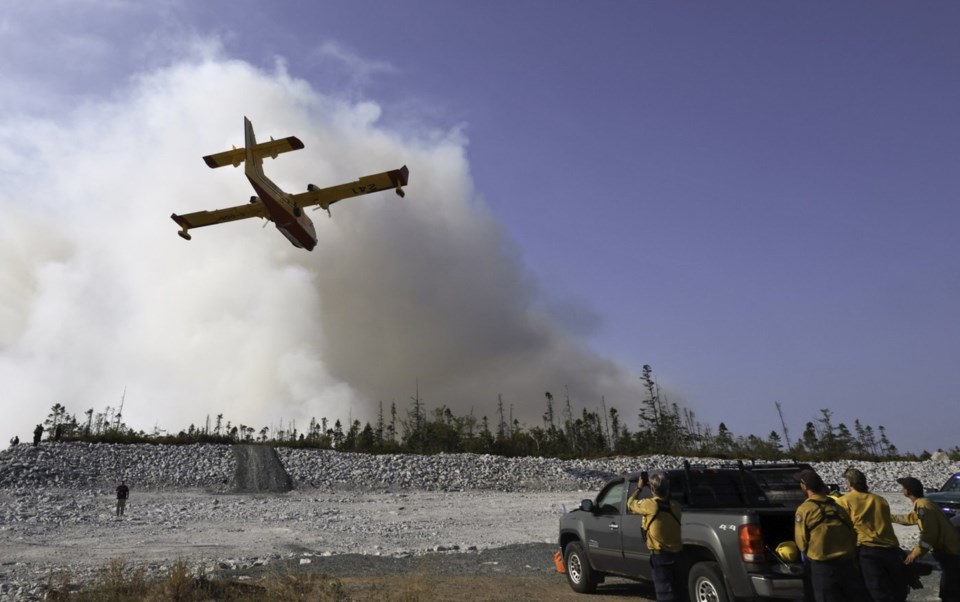HALIFAX — An evacuation order in the West Dalhousie area of Nova Scotia's Annapolis Valley was expanded late Thursday after a lightning strike ignited nearby woodlands the night before and triggered an intense, out-of-control wildfire.
The County of Annapolis expanded the area covered by an evacuation order that was first issued on Thursday morning and covered about 40 homes.
Some residents in the West Dalhousie Road area had to leave immediately as flames from the Long Lake fire advanced to within several kilometres of their homes.
The fire was an estimated four square kilometres in size.
Across the province, more than 130 wildfires have broken out this season amid drought-like conditions, with 11 currently burning.
Meanwhile, a wildfire on the western outskirts of Halifax that had prompted evacuations was reported as being held late Wednesday and was expected to be brought under control on Thursday.
The fire in the Annapolis Valley had grown rapidly overnight because the flames reached the tops of the trees, a phenomenon known as crowning.
"The whole tree is burning as the flame front is advancing," said Scott Tingley, the Natural Resources Department's manager of forest protection. "It poses additional challenges in terms of fire suppression."
Asked if fixed-wing water bombers had been brought in to douse the flames, Tingley said there were none available.
Nova Scotia does not have its own fleet of water bombers, which means it relies on other provinces, like New Brunswick and Quebec. Nova Scotia, however, did have access to four helicopters that can sling large buckets of water.
"We are doing our best to co-ordinate regionally and nationally to see what is available, but there's a number of provinces with very challenging situations," Tingley told a virtual briefing.
Still, Tingley said water bombers probably wouldn't have much of an affect on the Long Lake fire.
"We'd be able to make some progress, but with the nature of this fire — and how quickly it grew — it would be questionable about how effective they would be," he said. "That fire is intense enough that fixed-wing (aircraft) might be minimally effective."
Officials said heavy equipment has been brought in to widen roads and clear brush to protect some structures. Sprinklers have also been set up to keep the flames at bay.
On another front, an official said this fire season has been much different than the one in 2023, which saw the province suffer through an unprecedented series of wildfires that scorched 250 square kilometres of land, destroyed more than 200 homes and forced about 20,000 people to evacuate.
Jim Rudderham, director of forest protection, said the 2023 fires happened in May and June, when conditions were not that dry.
"Those fuels are incredibly dry now, all of them," he said. "Even large tree stumps, large logs, everything is extremely dry … Spring fires are fast-burning fires that don't burn usually deep. But the fuels are so hot and dry now that these fires … will burn deep and all available fuels will burn."
Rudderham said the province needs a deep drenching from rainfall.
"We would take any drop of moisture we could get, but we need protracted days of steady rain," he said, adding that the forecast doesn't look good. In Halifax, where the ground is particularly dry, the forecast was calling for about five millimetres of rain on Thursday night and about 10 mm on Sunday night.
This report by The Canadian Press was first published Aug. 14, 2025.
Michael MacDonald, The Canadian Press



